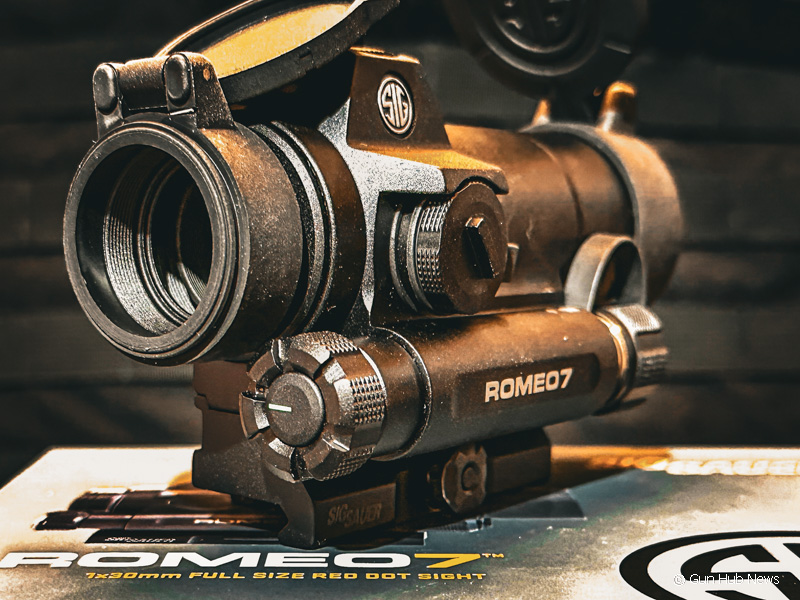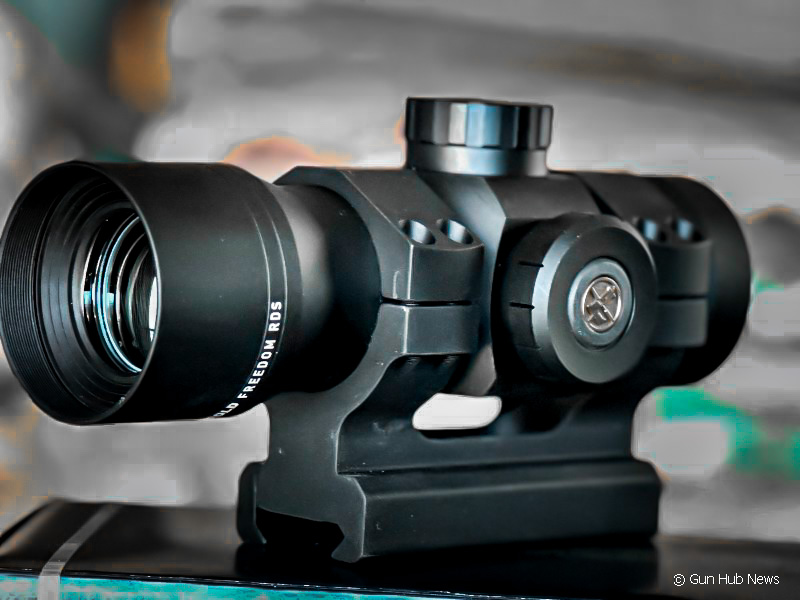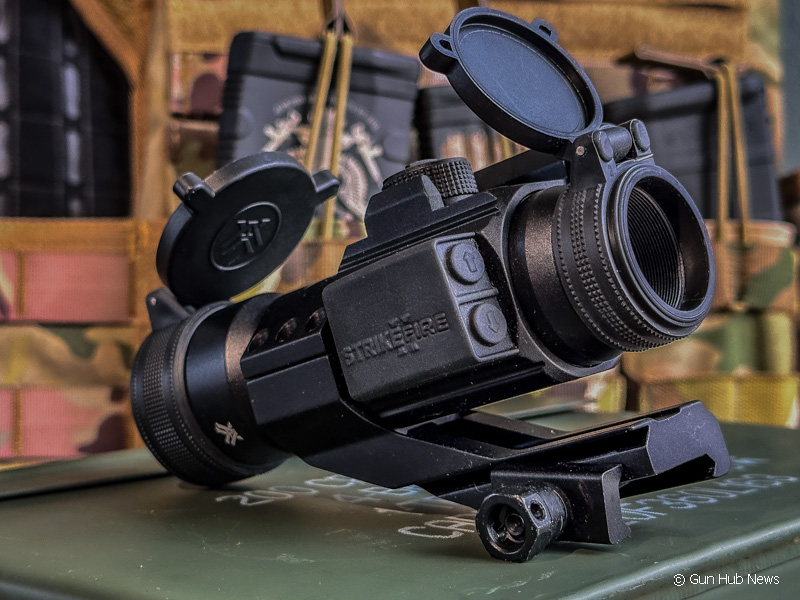Finding a red dot for an AR-15 is hard enough with such a crowded market. Looking for a durable but affordable optic is an even harder process. If you go too cheap, the optic will break at some point or not stay sighted in. If you buy the best red dot available, you could easily go broke. There are a lot of good quality AR-15s on the market at a reasonable price these days. And buying an optic that costs more than the rifle just isn’t an option for some people.
I am always on the lookout for an optic that is built well but sells at a bargain price. When I test an optic, I like to push them to the extreme that most optics could face in their lifetime. This means cooking them in the oven up to 150-degrees (or whatever the manufacture claims they can withstand). I freeze the optic over night to check if it still functions in cold weather and I soak it in water. If it withstands these tests, I start dropping it from a few feet and move up to 6-feet.
This is to see if the optic can withstand the normal distance it could fall if someone dropped it. I attach the optic to the gun and check it for accuracy between each test. If it fails any test, it doesn’t make it on any of my lists. So I have tested each one of these optics and they have passed with flying colors. All that’s left is for you to decide which one is best for you and your rifle.
1. Sig Romeo 7 red dot
This red dot optic has been one of my favorites for some time. Besides testing it in various ways, I still have it on one of my AR-15s. It runs on a AA battery which is handy because everyone has some of those laying around. There are multiple brightness settings on an easy-to-use rotating dial. But if you leave it on, it will turn off on its own. A built-in shake-awake feature turns it back on when it senses movement. Some optics require motion activation to be turned on separately as part of their settings. I like how simple this one is. Sig makes a lot of great optics, and this is one of the best.

The Romeo 7 is on the larger side for red dots and reminds me somewhat of an older Aimpoint. You get a threaded kill flash, and two different mounts for the picatinny rail. One is a quick release mount and the other a standard clamp like an Aimpoint mount. I keep an extra battery in the pistol grip of the rifle to make sure I’m always good to go. It retails for around $200.
Features
- Low Dispersion (LD) glass lens design with high performance coatings for excellent light transmittance and zero distortion
- 2 MOA dot is optimal for close quarters battle to mid-range target engagement.
- CNC machined 6061 aluminum body for extreme ruggedness and durability.
- Manual illumination controls.
- MOTAC™ (Motion Activated Illumination) powers up when it senses motion and powers down when it does not.
- Provides for optimum operational safety and enhanced 62,500 hours of battery life in medium illumination setting.
- Ready to mount with a low-profile cross bolt M1913 STANAG-compliant mount and 1.535″ QD riser mount.
- Dependable waterproof (IPX-7 rated for complete water immersion up to 1 meter) and fog-proof performance.
2. Leupold Freedom RDS red dot
Known more for making great scopes, Leupold hit a home run with the RDS red dot optic. I’m listing this one second, but it’s more of a tossup when comparing it to the Romeo 7 red dot. The reason this one is number 2 on the list is because of its price. And I guess the battery is another reason. I don’t mind small batteries on micro sized optics. But this is not a small optic, and it has a CR2032 battery to power it. I can’t say I’ve had any issues with it going dead quickly, but a larger battery would have been nice.

What I love about it however is the clearly defined dot and the activation button. There is no dial to turn, and no small button to hold down for several seconds. A golden looking emblem on the side is the activation button. Give it a quick push and it’s on. Each additional push cycles through the brightness settings. Hold it down for a few seconds to turn it off or just leave it on. Like the Romeo 7 optic, it has auto on and off features built in.
It’s a little bigger than the Romeo 7 optic, but it’s built like a tank. It did just fine with our standard tests (bake, soak, freeze, drop) and it’s easy to get on target. The downside is it only has a 1,000-hour battery life and it costs around $275. But let’s be honest, 1,000 hours is not bad, and the cost is a lot better than other optics out there.
Features
- Dot provides definitive aiming point.
- 1 MOA dot is ideal for precise shot placement.
- Does not obscure target.
- Provides a wide field of view.
- Rapid target engagement.
- Red illumination.
- 1 MOA is approximately 1 inch at 100 yards.
- Rear (second) focal plane.
Vortex STRIKEFIRE II red dot
This has become a popular red dot and there is a reason for it. First, Vortex offers an unconditional lifetime warranty on all their products. If it breaks, they will fix it regardless of whether you bought it new or used. Second, it sells at a great price for the quality of the optic. But there are some downsides to this optic, at least for me, and that’s why I placed it third on the list.

My first complaint about it is the activation buttons. They are small and hard to push when you’re in a hurry. You don’t always think of this as a problem until your adrenaline is running and your brain isn’t functioning correctly. It’s a personal preference, but I don’t like the two small buttons on the lefthand side of the optic. If you have gloves on, they are almost impossible to push and they are a challenge when you don’t. Optics should be simple and fast to operate.
The second thing I don’t like is that it doesn’t have an auto on or off feature. If you leave it on, it stays on. I like my rifle to be ready to go when I grab it, or at least be quick to turn on. I know I’m getting picky here, but it just bugs me. Overall, it’s a great optic and has been around long enough to prove its durability. The Strikefire sells for $200 which is a good price.
Features
- Lense: Fully multi-coated
- Shockproof: Withstand recoil and impact
- Dot Size: 4 MOA
- Mount type: Lower 1/3 Co-Witness Cantilever
- Objective lens diameter: 30mm
Summary
I have used all three of these optics for years and haven’t had any problems with them. Exposed to cold, heat, water, and impact, they didn’t die during my tests. Would an Aimpoint, EOTech, or Trijicon provide even more durability? Yes. But you also pay for that extra durability. And the big question is what do you plan to do with the optic? You can drop any of these and they hold up.
Throw them out of an airplane or drive over one in a car and sure it may fail while a high-end wouldn’t. But for everyday use and the price, these optics are hard to beat. My opinion is the quality is well above the price you pay for them. Pick the one that works for you and enjoy.
